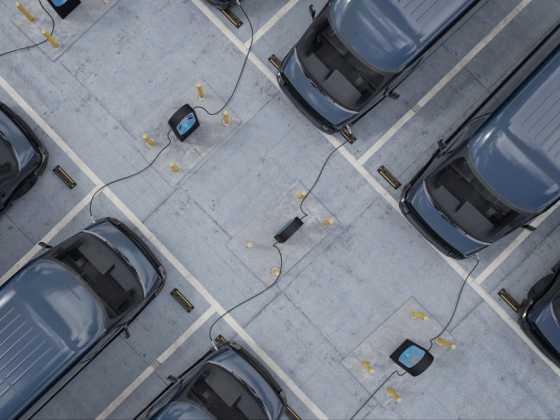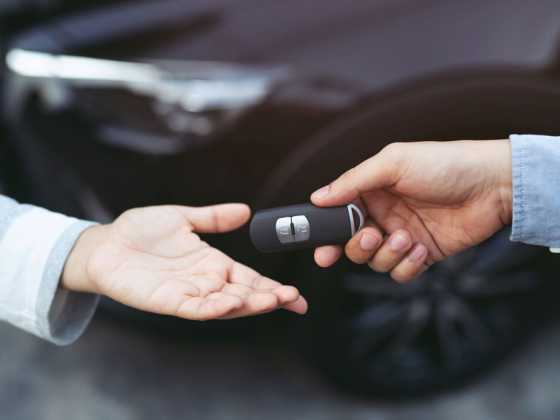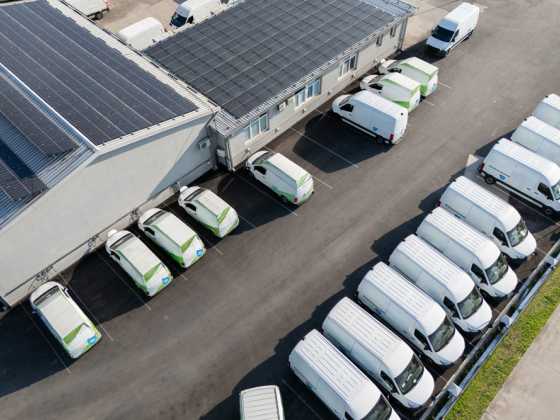Useful resources for EV chargepoint procurement

The bringing forward of the the phase-out of petrol and diesel vehicles to 2030 means all fleets need to start thinking about becoming zero-emission. Electric vehicle charging therefore needs to be more widespread and accessible. GreenFleet caught up with Cenex CEO Robert Evans for a recap on chargepoint procurement best practice
The much-anticipated 2030 target for the phase-out of petrol and diesel vehicles means all fleets need to become green fleets, and electric vehicle (EV) charging needs to be widespread and accessible where both fleets and the general public’s vehicles will park and charge. Put simply, we will need many more places to charge EVs than we have today, and that means a lot more chargepoint procurement.
One of the best-known guides available is the Chargepoint Procurement Guidance, originally prepared by Cenex and published by the UK Electric Vehicle Supply Equipment Association (UK EVSE) and now available with the Renewable Energy Association (REA) after the merger of the UKEVSE members into the REA EV Group. This “independent” and “industry informed” self-help guide for those planning chargepoint purchases remains one of the more comprehensive and accessible guides. The second edition is available to download from the REA website here.
Green Fleet caught up with Cenex CEO Robert Evans for a recap of the Guidance, as well as for updates on Cenex’s current activities in EV charging.
Commenting on the Guidance, Robert Evans, CEO of Cenex, said, “The beauty of EV charging is that it can be done in multiple locations: at home; at work; in public car parks; at tourist, leisure and retail destinations; and at motorway service areas. The diversity of locations brings convenience for the EV motorist, but also means multitudes of organisations will need to procure EV chargepoints. Many of these will be undertaking this task for the first time and, as a result, in need of advice.
“In preparing the first and second editions of the Guide, we wanted to offer those new to EV charging an independent guide on good procurement planning. The guidance has stood the test of time, and its relevance is only increasing, as EV sales are set to rapidly increase.
“From the Cenex perspective, the Guidance isn’t an end in itself, but often marks the beginning of the dialogue and support we offer our customers. My team works with many public bodies that are developing policies and plans for their towns, cities and regions, as well as for companies that have multiple sites and different types of EV to consider. What we find is that it helps those reading formulate their thinking and aids discussion within their organisations to develop a collective position as to their requirements ahead of procurement, and cements the importance of long-term thinking. This dialogue means our customers are able to make progress quicker, and tend to lean on my team more for analysis to identify candidate sites and reassurance on questions of future-proofing, given the fear that what gets installed now might become quickly outdated.
“Cenex’s research activities remain focused on unlocking the potential for new types of charging, including “vehicle-to-grid” (V2G) and wireless charging. V2G chargers can feed power back from EV batteries into nearby buildings or back to the grid. The benefits offered include cost reduction and revenue generation. My team has been active in more than 10 research projects to date and published extensively on V2G, most recently reviewing the V2G value propositions with a report available here. We are still a few years away from the mass-market adoption of competitively priced V2G units. The key use cases for V2G are arguably where EVs are parked with longer dwell times than needed to charge the EV, and the energy can be fed back into a customer’s buildings. We have looked particularly at the integration of EVs and V2G with solar power and on-site battery storage. Examples include the Amsterdam Arena, where Ajax plays its football.
“Another example of new technology is wireless charging, considered suitable for locations where EVs have very short dwell times, such as taxi ranks. Our WiCET project is looking at taxi-rank operation in Nottingham as a pilot. This type of wireless charging is likely to come into its own when autonomous shuttles start to be introduced.”
The guidance
The guidance has “Nine Ps” to consider for electric vehicle chargepoint procurement, with the first referring to Product. The guide describes the different types of chargepoint product that have been introduced into the market over the last decade, as well as explaining about “smart charging”, whereby the charge across a group of chargepoints can be limited. At times of low EV demand, smart chargers can operate at full power, but at times of high EV demand, charge rates to the points can be limited. In some cases, this mitigates the need for network-upgrade costs.
Power
With EV uptake now accelerating and the anticipation of larger numbers of EVs in future, it will be increasingly common for procurement projects to involve multiple chargepoints at given locations. The available power supply therefore becomes a critical consideration. The guide includes a table with illustrative cost data sources for a joint publication by UK EVSE and Western Power Distribution dating to 2018.
Placement
This section of the Guide discusses the different location types, such as on-street, workplace and public, which will each have different considerations when it comes to EV chargepoint strategy. Also covered are specific points of interest, such as planning consent, parking-bay layouts and enforcement, and power-supply location.
Payment
At the time the first edition of the Guide was being prepared, it was common for chargepoints to be part of chargepoint network operator (CPNO)-run membership schemes, in which members would use RFID membership cards to access chargepoints. “Pay-as-you-go” charging was a new development, notably for rapid chargers. Now typically called “instant access”, pay-as-you-go is commonplace – not least because it has been made a legal requirement for new chargepoints. For higher-power chargers, contactless or chip-and-pin payment approaches make sense. For fast chargers, instant access is commonly offered by scheme operators through smartphone apps.
Proprietorship
Traditionally, a chargepoint was purchased and owned by the host but placed under the operational control of a CPNO. Now, the increased numbers of chargepoints required within cities and across national retail operations mean proprietorship questions are becoming more important. Organisations can now choose to lease rather than buy chargepoints, and also consider leasing prime sites to CPNOs to then act as owners-operators. In addition, they can run more of a shared risk-reward model, in which the groundwork for a range of locations for chargepoints are constructed and owned by the hosts and made available for CPNOs to operate from. CPNOs bid to have the operational concession for a fixed number of years. The profits from the scheme can then be split between the supplier and the host.
Project Management
This section of the guide highlights the need to identify key stakeholders and the tasks they will be responsible for within any chargepoint project. The guide notes that some chargepoint providers offer combined installation services and lists the potential benefits and pitfalls associated with this packaging of services.
Price, procurement and maintenance
This section of the Guide covers three related topics: For price – Indicative costs for the delivery and installation of different chargepoint types are given alongside typical operational costs. There are further questions which the reader can ask themselves as a potential host to understand the additional costs involved in a chargepoint project. For Procurement, there is a list of potential quality questions to be asked when doing procurement activity is given.
Maintenance meanwhile has a direct impact on running costs, but poorly maintained chargepoints lead to indirect costs in terms of customer complaints, reputational damage, and organisational time to resolve. This information focuses on service level agreements and what they could and should include.
Process of installation
The installation process is another key part of the overall chargepoint project. The Guide considers the latest electrical requirements introduced in the 18th edition of the IET Wiring Regulations, which came into effect on 1st January 2019.
Publicity and Marketing
This final section gives information on how to optimise use of installed EV chargepoints by ensuring that prospective users are aware of the equipment and its availability.
When asked if there were some key takeaway lessons from the review, Evans noted that three come to mind. “Firstly, don’t make your procurement about the short-term expediency of chargepoint price. Make sure to consider all factors contributing to costs and plan for evaluation criteria that ensure a balanced scoring of offers coming in, notably considering quality and the long-term. Secondly, don’t forget about maintenance. Poorly maintained chargepoints lead to indirect costs in terms of staff and customer complaints, reputational damage and organisational time to resolve. Thirdly, take time to consider the power requirements at sites and how these can be evolved over time. Traditionally there has been an expectation that the local grid will meet power needs, but site managers will attest to the cost for capacity upgrades. Therefore, there is value in considering the benefits on off-site generation and battery storage alongside future EV charging needs.”
Read the procurement guide here.






